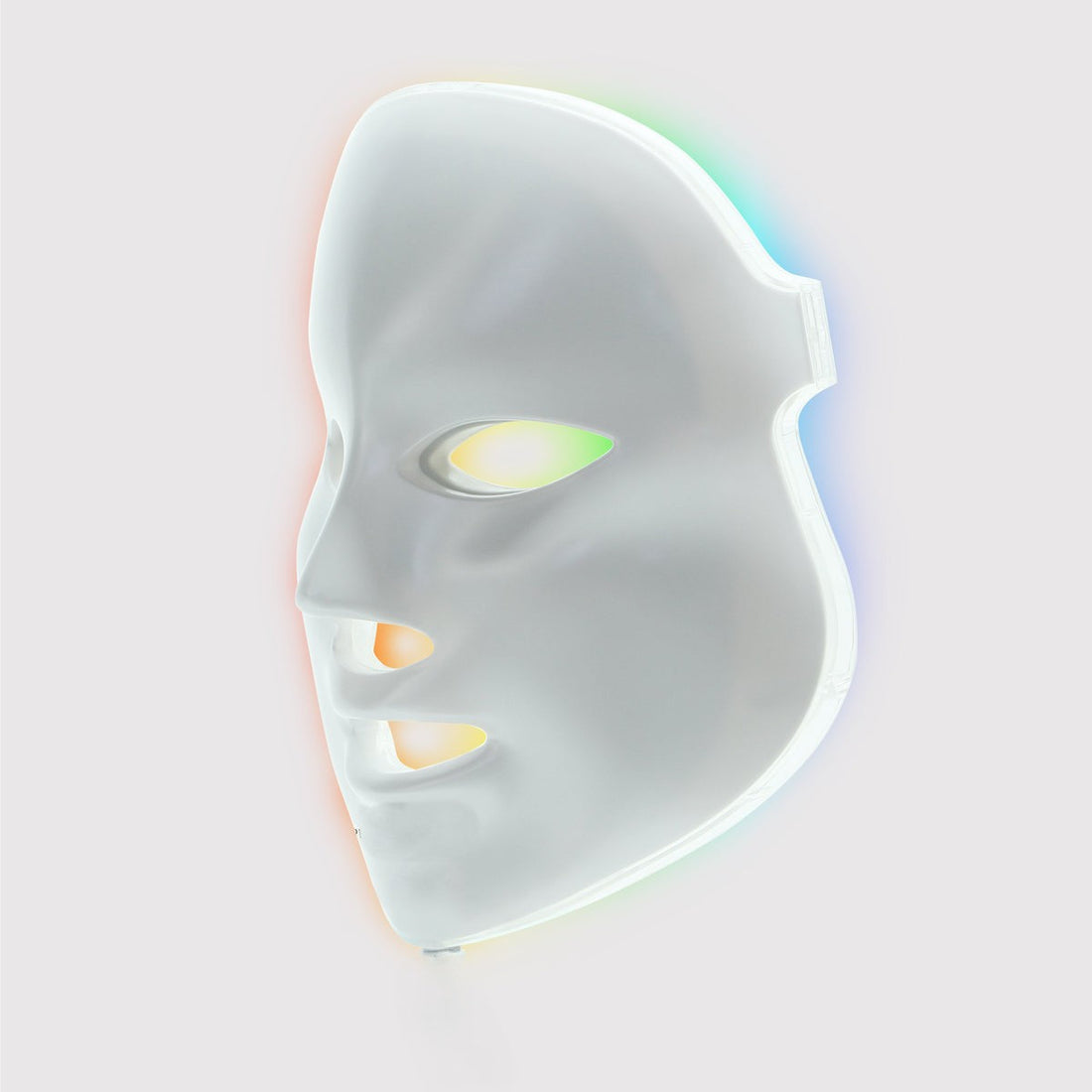
What You Should Know Before Buying an LED Face Mask
Share
Contents:
-
Light wavelengths
-
Number of LEDs
-
Light intensity (irradiance)
-
Treatment time
-
Budget
-
Comfort and personal preferences
-
Summary: How to choose the right LED mask
Reading time: about 7 minutes
Overview
Before buying an LED face mask, several factors are essential:
-
the wavelength (light color),
-
the light density,
-
the device power,
-
the treatment time,
-
safety,
-
and your budget.
Advertisements can be persuasive, but a smart purchase should always rely on technical specifications.
Understanding LED technology is the key to investing in an effective, high-quality device.
1. Understanding Light Wavelengths
Each light color penetrates the skin at different depths and produces specific effects:
-
Red (630–660 nm): stimulates collagen production and cell renewal.
-
Infrared (830–850 nm): penetrates deeper to reduce inflammation and promote tissue repair.
-
Deep infrared (up to 1070 nm): targets deep wrinkles and sagging areas.
-
Blue (415–470 nm): combats acne-causing bacteria and regulates oil production.
-
Green (around 520 nm): helps fade dark spots and even out the complexion.
Other colors (yellow, violet, white, etc.) are simply combinations of these main wavelengths.
2. Number of LEDs
The higher the number of LEDs, the more uniform and effective the light coverage.
A device with too few LEDs will leave untreated areas and produce uneven results.
Choose a mask with several hundred LEDs and at least one safety certification.
A densely packed LED array ensures better skin coverage and shorter treatment sessions.
3. Irradiance (Light Power)
Irradiance measures how much light energy your skin receives per second (in mW/cm²).
The higher this value, the faster and more effective the treatment.
Be cautious: some brands advertise high power measured on a single LED, which doesn’t represent the device’s overall performance.
Always check both the power per LED and the total number of LEDs.
4. Treatment Time
Less powerful masks require longer sessions.
If you can’t dedicate 30 minutes a day, choose a model that achieves results in 5–10 minutes.
High-performance masks deliver the optimal light dose in just a few minutes while still ensuring visible results.
5. Budget
LED masks vary widely in price.
Buying a cheap device with poor wavelength accuracy, few LEDs, or low power will most likely lead to disappointing results.
Always compare technical details:
-
precise wavelengths,
-
verified power levels,
-
sufficient LED count.
This combination truly determines value — not just price.
6. Comfort and Personal Preference
Technical specs are important, but comfort matters too.
A good mask should be comfortable, lightweight, and easy to clean.
Soft silicone designs are more pleasant to wear and fit better to the face.
Some models include built-in eye protection for added safety.
Comfort directly impacts consistency, and consistent use delivers better results.
A comfortable mask helps you maintain your routine and achieve glowing skin.
7. In Summary: How to Choose
To find a high-quality LED mask, focus on three main factors:
-
Precise wavelengths (red, blue, infrared).
-
Strong light density (irradiance).
-
A large number of LEDs for full coverage.
Then, adapt your choice according to your available time, budget, and comfort preferences.
Balancing technology and practicality will make all the difference in your results.
written by Charle Pill

